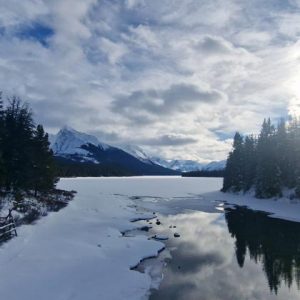My Camino de Santiago Pilgrimage
 The intoxicating scent of eucalyptus after a Galician shower. A whiff of wild garlic, or curry. Another plant redolent of aniseed.
The intoxicating scent of eucalyptus after a Galician shower. A whiff of wild garlic, or curry. Another plant redolent of aniseed.
Pine trees disappearing into a cloudless blue sky. Golden bracken. The inviting hue of a warming Galician chickpea stew.
The sound of a distant woodpecker, somewhere high in a forest of eucalyptus trees. Wild Atlantic waves crashing onto the rocky northern Portuguese coastline.
Slugs as sleek and black as a Kardashian eyebrow.
And eyes always looking for the next yellow arrow, daubed on a rock or a lamp post. Or for the famous shell, etched into a concrete marker post.
These are just a few of the sensory memories from my recent Portuguese Coastal Camino walk. 280km from Porto in northern Portugal to Santiago de Compostela in Galicia, tucked away in the north-western corner of Spain. 12 days of changing scenery. Several aching muscles and a few raw, inhibiting blisters.
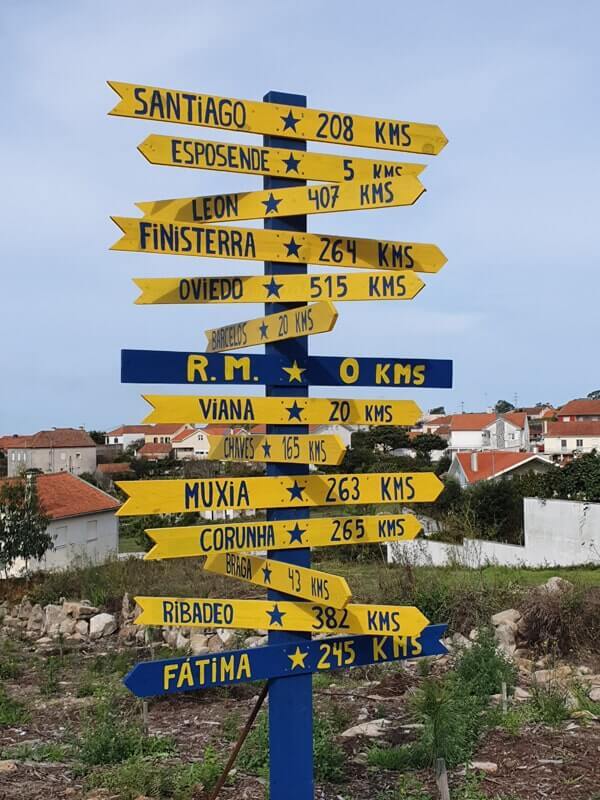 The best-known Camino pilgrimage route to Santiago de Compostela is the Camino Francés (‘French Way‘), a gruelling 800km from St Jean Pied de Port in south-west France, over the Pyrenees and across most of northern Spain. Other options now include the Camino Portugués (Portuguese Way), the Camino del Norte (Northern Way), and the Camino Inglés (English Way).
The best-known Camino pilgrimage route to Santiago de Compostela is the Camino Francés (‘French Way‘), a gruelling 800km from St Jean Pied de Port in south-west France, over the Pyrenees and across most of northern Spain. Other options now include the Camino Portugués (Portuguese Way), the Camino del Norte (Northern Way), and the Camino Inglés (English Way).
So why had I chosen the Portuguese Coastal Camino? We had seen and loved the film The Way a few years ago. It tells the story of a father who unexpectedly walks the Camino Francés, carrying the ashes of his son, who had died on the first day of the Camino. It’s heart-warming, funny and poignant, and sowed the seed for my own Camino experience one day.
In a normal year, more than 300,000 people walk the largely wide and inviting tracks of the iconic French Way. My Dad died a year ago, and I wanted a route that would give me the opportunity for some quiet contemplation of his life, and to recall some of the many happy memories of the times we had spent together. The Portuguese Coastal Camino offered that relative solitude. And a shorter, easier challenge for my ageing body!
Most peregrinos carry all their luggage on their backs, in vast rucksacks, and tend to overnight in albergues, pilgrim hostels offering dormitory-style accommodation for as little as €5-€15 per night. I confess to taking a less pious approach to my own endeavour, and opted for tour operator Camino Ways to sort out all my accommodation for me, and to have a bag transferred every day. So I just carried a small day pack and stayed in comfortable hotels and charming family-run B&Bs, safe in the knowledge that a hot shower, warm bed and cold beer awaited me after a long day on the Camino.
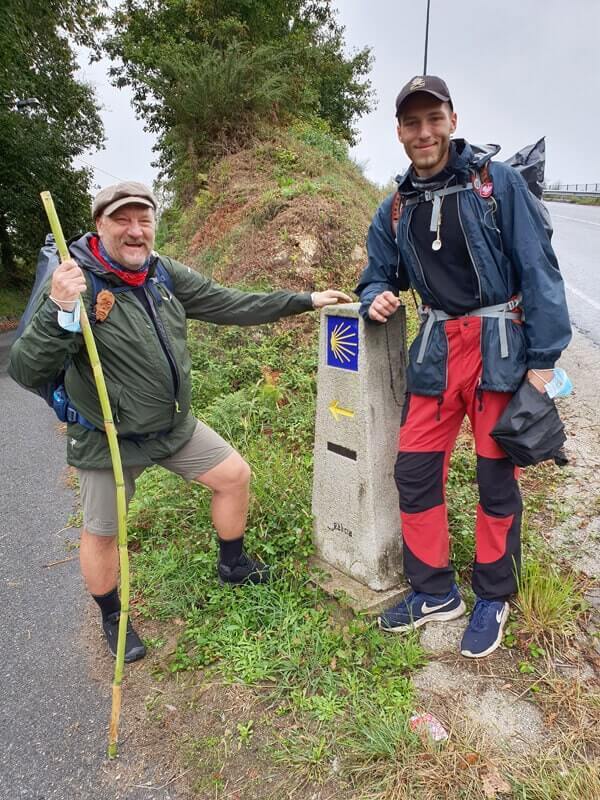 The Camino – The Way of Saint James – is a pilgrimage dating back to medieval times, its destination being the Cathedral in Santiago. Legend has it that the remains of the Apostle Saint James were buried here and discovered by a shepherd in the 9th century. Religious faith is probably why most pilgrims walk the Camino, but each will have their own reason and story.
The Camino – The Way of Saint James – is a pilgrimage dating back to medieval times, its destination being the Cathedral in Santiago. Legend has it that the remains of the Apostle Saint James were buried here and discovered by a shepherd in the 9th century. Religious faith is probably why most pilgrims walk the Camino, but each will have their own reason and story.
Whatever drives you to walk towards Santiago de Compostela, the people you meet will be an integral part of the experience. I met a friendly, humble Polish father and son, on an adventure together and wanting to reaffirm their Catholic faith at the Cathedral. The father is a history teacher, and was imprisoned during the 1980s when fighting for Solidarność against the Communist regime. A crazy young German guy, a film-maker and adventurer, was walking with nothing other than his clothes, a phone and a toothbrush, in an effort to persuade people how few material things we really need.
But whoever you meet on the Portuguese Coastal Camino – whether locals or other pilgrims – you can be assured of a friendly greeting: bom caminho for the first few days, or buen camino once you’ve taken the ferry from Caminha across the Minho estuary into Galicia.
I can highly recommend Camino Ways if you’re planning your own pilgrimage. Their support, flexibility and customer service ethos – whether when discussing booking options, during the planning phase, or whilst on the trip – are outstanding.
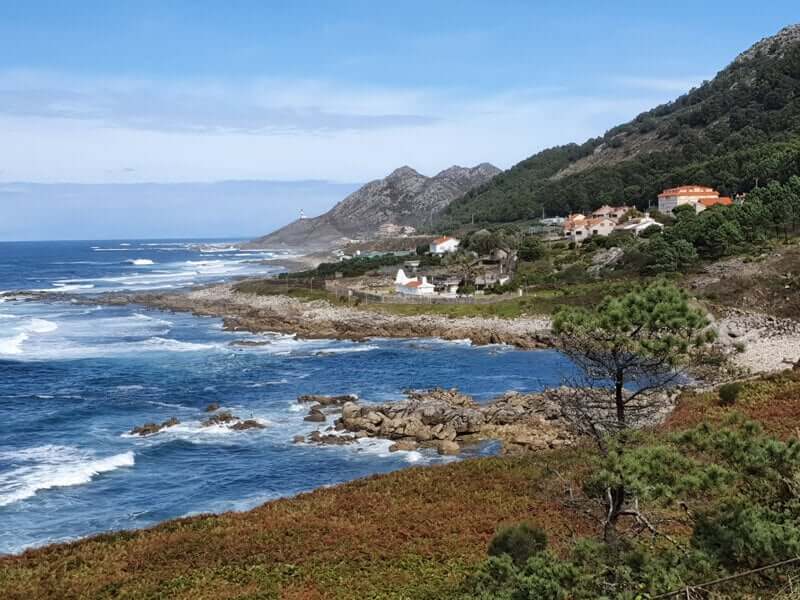 Juanma, in particular, was a constant support. ‘Galician language has more than 60 words to describe the source of the lush greenery you will see along the way so my recommendation as a Galician man is to embrace the mantra: “se chove, que chova” (“if it rains, let it rain”). And I did. Although after a few days of walking in Portuguese sunshine and late summer heat, feeling wetter after a Galician downpour than a teenage William Hague at the Tory Party conference wasn’t always welcome.
Juanma, in particular, was a constant support. ‘Galician language has more than 60 words to describe the source of the lush greenery you will see along the way so my recommendation as a Galician man is to embrace the mantra: “se chove, que chova” (“if it rains, let it rain”). And I did. Although after a few days of walking in Portuguese sunshine and late summer heat, feeling wetter after a Galician downpour than a teenage William Hague at the Tory Party conference wasn’t always welcome.
And what about Covid-19? I had originally booked this adventure for April, but of course that wasn’t possible. It would have been easy to reschedule again, given increasing concerns, but I wanted to complete the pilgrimage whilst memories of Dad were still relatively fresh in the mind. I’m adventurous, but not reckless. I had read about protective measures put in place by airports and airlines, and I was comforted by Camino Ways confirming that each of the places I was staying at along my Camino route had been signed off as ‘Covid-safe’.
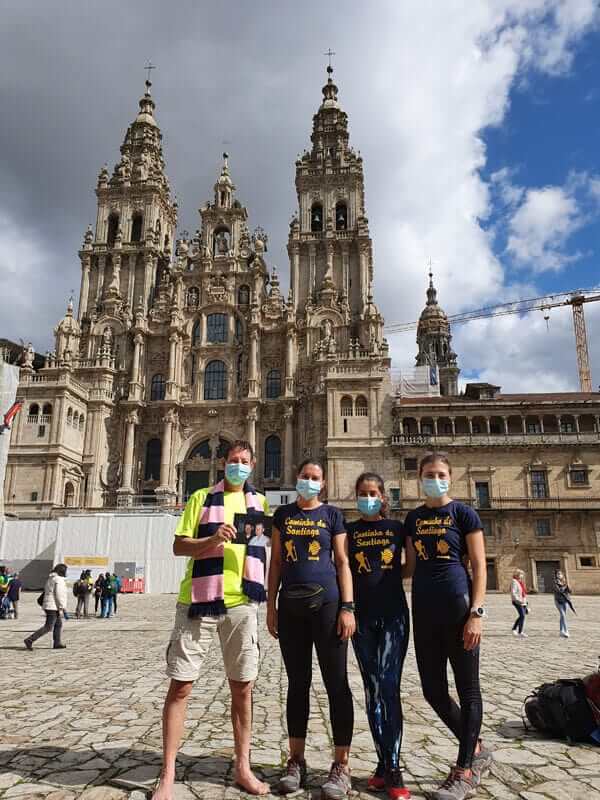 And what about the reality of travelling to Portugal and Spain, and walking 280km, during a global pandemic? The health protocols at Heathrow were impressive, and of course the airport was far less crowded than in normal times. The British Airways flight was probably at around 1/6th of capacity, so social distancing on board was easy to maintain. Everyone wore masks all the time, other than when eating and drinking the ‘meal’, a simple bag containing crisps, a packet of shortbread biscuits and a small bottle of water. Every single place I stayed at along the Camino had strict protocols in place and generally, particularly in Spain, the wearing of masks is ubiquitous and strictly enforced.
And what about the reality of travelling to Portugal and Spain, and walking 280km, during a global pandemic? The health protocols at Heathrow were impressive, and of course the airport was far less crowded than in normal times. The British Airways flight was probably at around 1/6th of capacity, so social distancing on board was easy to maintain. Everyone wore masks all the time, other than when eating and drinking the ‘meal’, a simple bag containing crisps, a packet of shortbread biscuits and a small bottle of water. Every single place I stayed at along the Camino had strict protocols in place and generally, particularly in Spain, the wearing of masks is ubiquitous and strictly enforced.
But naturally always check the latest FCO advice regarding quarantine restrictions, as well as the prevailing Covid-19 protocols before booking any overseas travel during these unprecedented times.
Walking the Camino was an unforgettable experience. I felt genuinely safe Covid-wise whilst travelling and on the walk – although the next two weeks of enforced quarantine will of course be the acid test – but overall I’m so glad I went. And it did give me the opportunity to feel close to my Dad again.
For any other Silver Travellers interested in walking one of the Camino routes, I would absolutely recommend the experience, whatever your motivation. But you shouldn’t underestimate the physical challenge of walking fairly significant distances every day. I was cycling-fit before I went, but not walking-fit. I struggled with some muscle strains over the first few days, particularly the long first day walking 22 miles from Porto, in heat and mainly on hard surfaces. And I picked up some pretty gruesome blisters that made the last couple of days a tad painful.
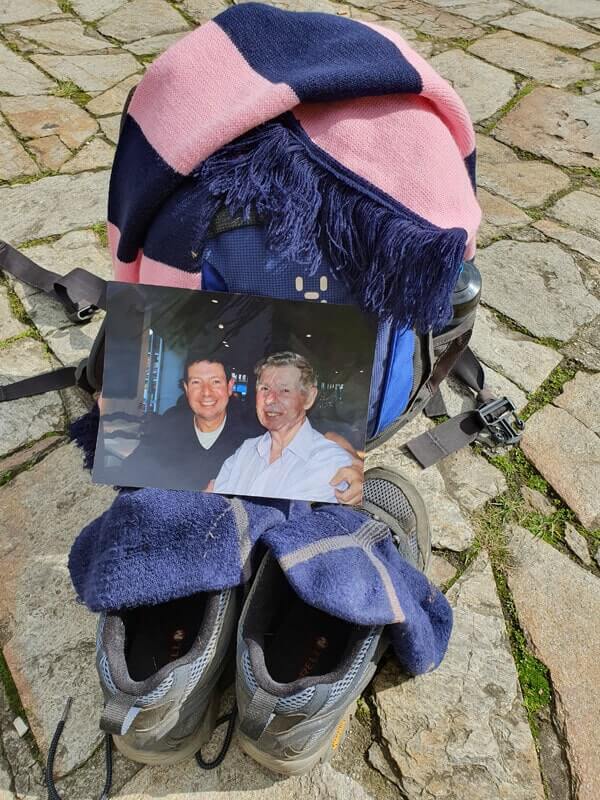 I walked the ‘Portuguese Coastal Camino’ route, but only relatively short sections hug the wild coast itself, yellow arrows largely linking small rural hamlets and towns, often passing close to busy roads, before joining up with charming seaside towns for your overnight stays. Perhaps any Camino route is more about the pilgrimage experience, the people you meet along the way, the religious history and the beautiful destination of Santiago de Compostela and its symbolic Cathedral than the aesthetics of any other walking holiday.
I walked the ‘Portuguese Coastal Camino’ route, but only relatively short sections hug the wild coast itself, yellow arrows largely linking small rural hamlets and towns, often passing close to busy roads, before joining up with charming seaside towns for your overnight stays. Perhaps any Camino route is more about the pilgrimage experience, the people you meet along the way, the religious history and the beautiful destination of Santiago de Compostela and its symbolic Cathedral than the aesthetics of any other walking holiday.
Muchas gracias to Debbie and the Silver Travel Advisor team for publishing this article and for supporting me in the campaign to raise funds for some south London community initiatives in Dad’s memory and name. You can read more about Dad, his footballing career with Dulwich Hamlet FC and the campaign in this earlier article.
And another gracias to Olivia Pittet for sending me a copy of her informative book ‘The Camino Made Easy: Reflections of a Parador Pilgrim’.
Buen Camino, amigos!


